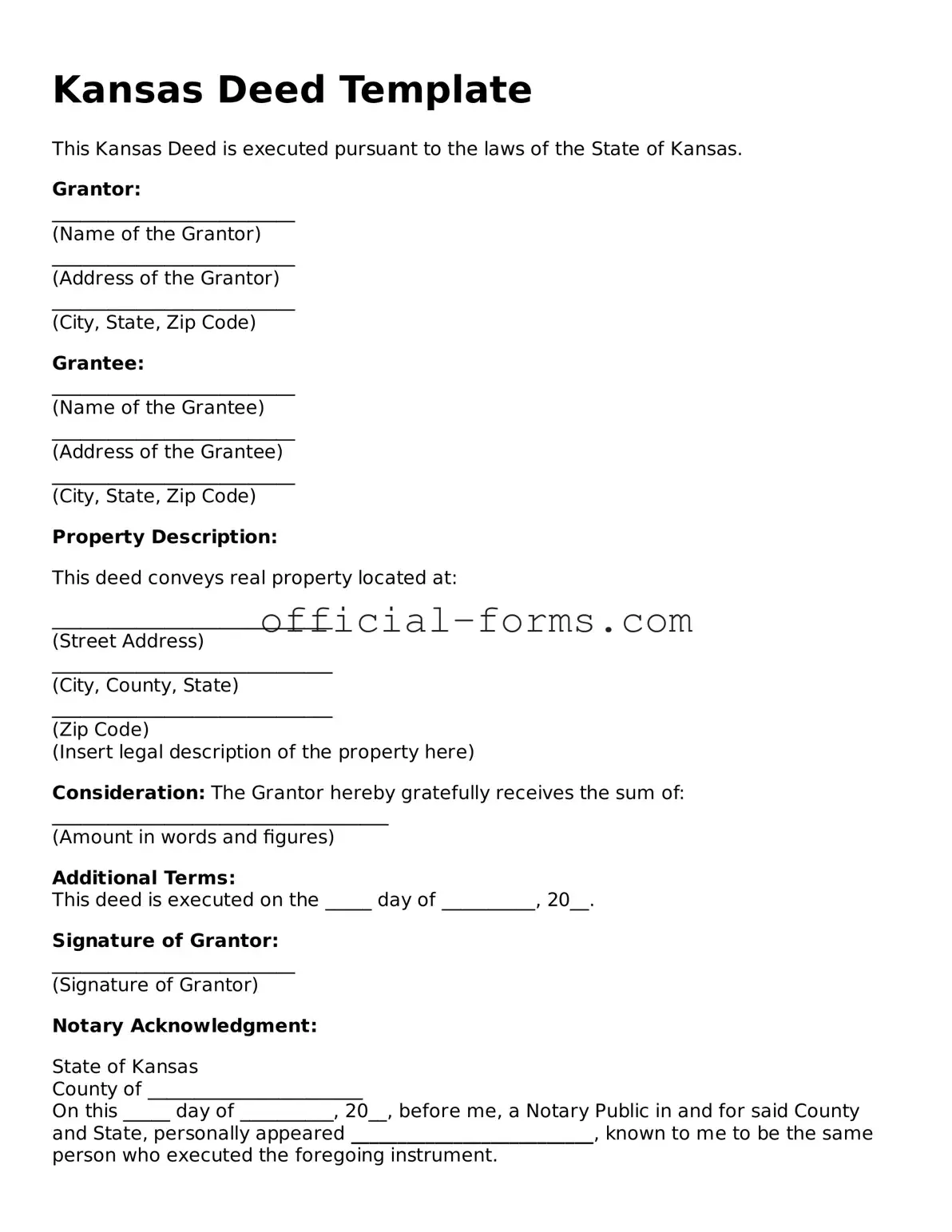Filling out a Kansas Deed form can be a straightforward process, but there are common mistakes that individuals often make. One frequent error is failing to include the correct names of the parties involved. It is essential that the names of both the grantor (the person transferring the property) and the grantee (the person receiving the property) are spelled correctly and match their legal identification. Any discrepancies can lead to complications in the transfer process.
Another mistake is neglecting to provide a complete legal description of the property. The legal description should clearly identify the property being transferred, including its boundaries. Omitting this information or using vague terms can create confusion and may even render the deed invalid.
Many people also forget to sign the deed in the appropriate places. The grantor must sign the document, and in some cases, witnesses may be required. Without the necessary signatures, the deed cannot be legally recognized, which could delay or derail the property transfer.
Inaccurate dates are another common pitfall. The date of execution should be clearly indicated, as it marks when the deed was signed. If this date is missing or incorrect, it may lead to issues regarding the timeline of the property transfer.
Some individuals mistakenly assume that notarization is optional. In Kansas, most deeds must be notarized to be valid. Failing to have the deed notarized can invalidate the document and create significant legal challenges down the line.
Moreover, people often overlook the need to record the deed with the appropriate county office. Recording the deed is crucial for establishing public notice of the property transfer. Without this step, future buyers or lenders may not be aware of the existing ownership, which could result in disputes.
Another error is not including any necessary attachments or exhibits. If there are additional documents that support the deed, such as surveys or prior deeds, these should be included to provide clarity and context. Missing attachments can lead to misunderstandings regarding property rights.
Lastly, individuals may fail to check for any outstanding liens or encumbrances on the property before completing the deed. It’s vital to ensure that the property is free of any legal claims that could affect the transfer. Ignoring this step can lead to complications that may affect the grantee’s ownership rights.
